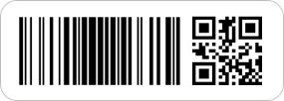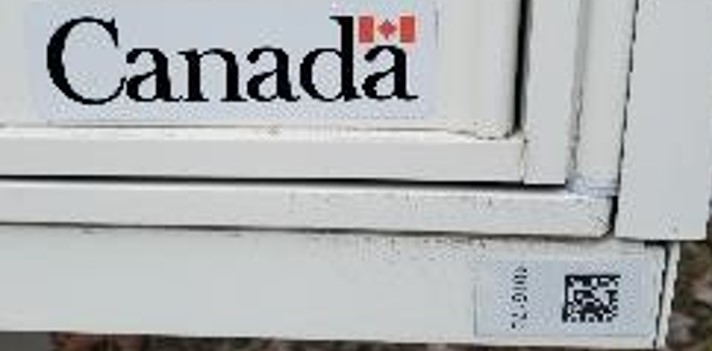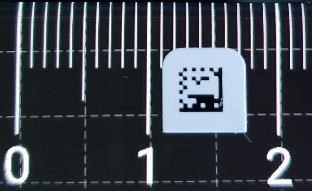2D Barcode Labels for Asset Management and Inventory Count
SageData is based in Ottawa, Ontario, Canada
QR Code, Matrix barcode, 2D barcode are names used in reference to a usually square-shaped label containing small black dots or rectangular shapes on white background. The QR Code is probably the most popular term one encounters frequently.

Most smartphone users know how to read / scan QR Codes, as they are frequently used to store a mobile website address, or any other information, of user's interest.
The Covid-19 pandemic gave QR Code another boost of popularity:
- Some restaurants switched to QR Codes as an access to the on-line menu. Patrons
can
browse the menu after scanning QR Codes with their mobile phones. This is an efficient way of
eliminating paper-based menus.
- Another example is the vaccine passport. Some countries and or provinces
introduced
vaccine passports that use QR Code to store the information like the person's name, date of
vaccination, vaccine type, etc.

QR Codes are also found on paper bills, bank statements, etc. These are usually small rectangular 2D codes containing some information (usually a long number) relevant for the issuing institution.
In other words, today 2D barcodes are used widely. Modern barcode scanners are capable of scanning 1D and 2D barcode labels out of the box. So, if you are wondering whether 2D barcodes can be used for hardware asset management, the answer is yes, absolutely.
Most of our clients prefer 1D barcode labels. There are some good reasons for this
preference:
- 1D barcode labels are capable of storing all the information that clients
need.
- Many of their existing assets already have 1D barcode labels. It makes sense to
use
similar labels for new physical assets.
- 1D labels are usually smaller in height than common 2D labels (there are
exceptions -
more on it below) and may have a number and a company name printed above or below the stripes.
While
it is possible to print such information beside the QR Code, it will increase the overall
dimension
of the label.

Some of our clients use barcode labels that contain 2D and 1D barcodes side by side. This is
done to
ensure compatibility between 2 client's systems.
2D barcode labels are better suited to
environments with a higher probability of weather exposure, dirt / dust, etc. This is due to the
error
correction capability.

For example, Canada Post uses QR Codes to identify community mailboxes.
In this case the QR
Code
is printed on a metal plate to ensure its longevity while exposed to the weather
elements.

Other clients use 2D barcode labels to achieve a very small footprint. Assuming the
information
encoded is relatively small (for example a string of alphanumeric characters), a 2D barcode
label
can be very small.
We have helped one of our clients with tiny less than 4 x 4mm labels.
This is an example of 6 x 6mm label with 3 x 3mm 2D barcode containing 4 alphanumeric
characters.
There is another advantage that 2D barcode offers - it can be scanned / read in any
direction.
Therefore, if small hardware pieces are labeled with tiny 2D barcodes, they could be scanned
without
specific orientation as long as the code is visible.
In conclusion, QR Code, Matrix code, and 2D code labels offer great potential to address
specific
needs, such as:
- containing a lot of information (larger size label)
- being suitable for an environment with an exposure to elements, dirt and dust
- being tiny (limited information encoded)
- being read / scan in any direction
If you are considering using QR Code labels, give us a call. We would be happy to discuss your business needs and apply our experience to get you going.
For further information browse the following pages:
- premium asset tag / label
- how to choose between 1D
and
2D barcode symbology?
- barcode label background
color
- mobile handheld
computers
QAOK5361
